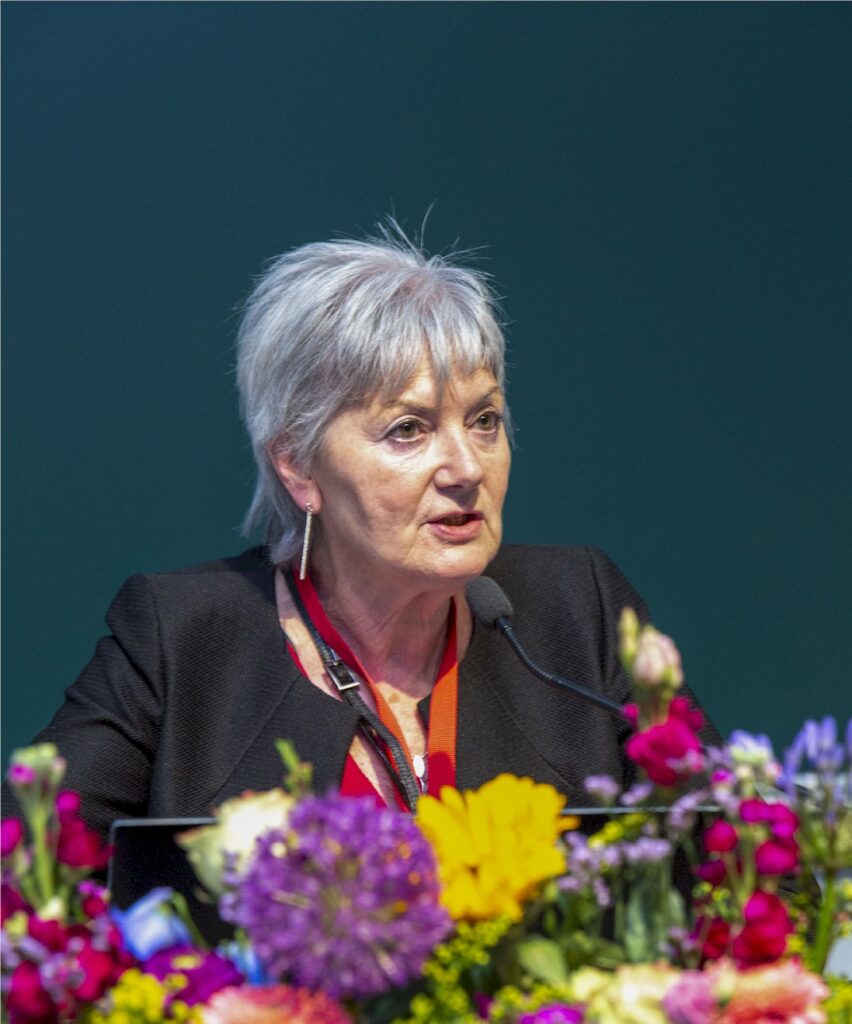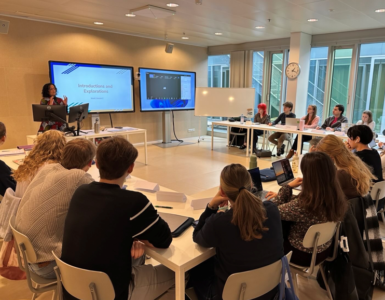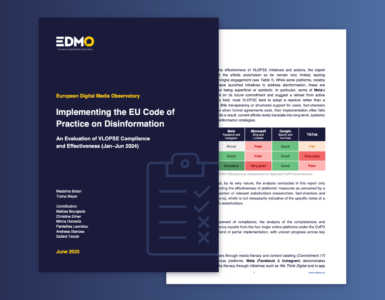by Sally Reynolds, Media & Learning Association/EDMOeu.
Here in Europe, we are seeing an ever-widening variety of interventions intended to enhance the media literacy skills and competences of our citizens. Some are very broad, addressing the public in a more general way, while others address highly targeted audiences. The nature and effectiveness of different types of interventions is hotly contested amongst practitioners and researchers alike, with quite some debate not only on the success of different approaches but also, and probably more fundamentally, on what can be considered success in the broad range of skills, competences and attitudes that fall under a more general definition of media literacy.
When taking a snapshot of the different types of interventions that can be found, a good starting point is to consider these interventions from the position of the audience that they target. First up in this type of categorisation, are campaigns that are aimed at the general public. These types of campaigns e.g. the Be Media Smart campaign carried out in Ireland and the RAI Digital Pills Series in Italy usually involve a set of more general messages aimed at society as a whole delivered with the support of major media players such as broadcasters, social media platforms and others. While such campaigns can lack depth, they are an important tool in raising overall standards of media literacy.
A second broad category of interventions are those aimed at specific groups of intermediaries who, when more competent themselves in media literacy, are in a far better position to build the media literacy skills and competences of those with whom they work. The most common targets for these types of campaigns are those aimed at teachers, librarians and youth workers. These types of interventions are increasingly common and supported by different types of agencies and organisations and are of varying scale, depth and duration. When it comes to teachers, it’s worth looking at the difference between those provided in pre-service settings as opposed to in-service settings. While pre-service teacher training in media literacy remains something of a rarity, there is some evidence that this is changing. Our team in MLA is currently leading the TeaMLit project supported under the European Media & Information Fund (EMIF) which is putting in place a value-added and sustainable network providing guidance, resources and support to European teacher trainers in Media Literacy. One of our target groups are those responsible for pre-service teacher training in media literacy in the different teacher training colleges in Europe and we are seeing an encouraging upsurge in interest in this topic even if many of the media literacy modules aimed at trainee teachers remain optional. The situation regarding in-service teacher training is far more positive with an ever-growing number of organisations getting involved in providing teachers with training support. Some of these interventions are once-off short workshops and modules such as those provided by the IDEA Foundation in Hungary, part of the Hungarian Hub Against Disinformation. Others involve a longer engagement with teachers such as the Mediacoach programme led by Mediawijs in Flanders, Belgium, which involves a year-long engagement with working teachers. The background of those giving such training to teachers in Europe is also worth mentioning. In some cases, these are academics or experienced teachers who have developed their own media literacy skills and competences through their experience and interest while in other schemes and programmes, they involve journalists going into schools such as in the work carried out by CLEMI in France and by Lie Detectors in several European countries.
If you would like to read more about teacher training in this area, its worth checking out the Final report of the Commission expert group on tackling disinformation and promoting digital literacy through education and training published in 2022 which brings together the main insights produced by a dedicated Commission Expert Group on tackling disinformation and promoting digital literacy through education and training and provides a good overview of the state of play of both in-service and pre-service teacher training in this area.
Librarians are also an increasingly important set of intermediaries who need to be media literate and more and more initiatives are aimed at increasing their media literacy skills. In Portugal for example, the School Libraries Network (SLN) carries out a range of training and support activities for librarians to enhance their media and information literacy skills. Projects funded by the EC like SMILES have aimed at increasing the media literacy skills of librarians by providing them with training resources.
A significant number of interventions have targeted citizens directly. Many of these are aimed at younger people and take the form of games or workshops that are carried out with students in schools or youth clubs. Beeld en Geluid in the Netherlands for example run workshops regularly for school and youth groups to foster media literacy and there is an ever-increasing number of games available such as the Bad News Game and the games and resources recommended by Commonsense. Some of these games have a specific target in mind such as Media Jungle which aims to make media literacy skills and competences as widely accessible as possible. Other schemes target older people like the SUM project in Spain, Italy and Finland.
The type of media literacy intervention can also be considered in terms of purpose and the type of competences, skills and attitudes it addresses. With the ever-growing focus on disinformation, some interventions focus specifically on building citizens’ resilience when it comes to countering fake news while others take a more holistic attitude, understanding media literacy as being about a far wider set of necessary skills and competences that just those needed to deal with the scourge of disinformation. Mediawijs in Belgium speak about media literacy being ‘more than just a competency. It also has a context, a ‘why’, and a greater purpose’ and the type of interventions they provide are based on this premise.
The nature of media literacy interventions is subject to a lot of divergent opinion as researchers and others hotly debate what actually works – and when do you actually know whether an intervention has been successful or not. Given that what we are seeking to enhance is behavioural change, most commentators agree, that simple ‘before’ and ‘after’ evaluation assessments of knowledge gained don’t actually represent any real shift in the deeper cognitive skills and attitudes necessary to be truly media literate. One common intervention type, that of explaining to people the practices that those spreading disinformation use to spread fake news is often seen as something of a double-edged sword. On the one hand it is a useful way to show people how they are being lied to through the media, but it can often have the unwanted effect of decreasing people’s overall trust in media in general. They can start to believe that all media, even the most trustworthy, is using the same tricks to mislead them. Teachers often worry that such approaches can even help their students to spread false information themselves. This distinction between helping people to understand how media operates and functions at different levels and making them suspicious of all media can be a very fine line to tread when developing a successful media literacy intervention.
Intervention types can also be viewed in chronological terms, i.e. the types of interventions favoured during different time periods related to the prevailing media culture. DROG founder, Ruurd Oosterwoud, in his recent MLA article summarises well the DROG Intervention model which covers 5 different generations of intervention type, from the early approach of simply providing correct information to counter misinformation to what Ruurd styles at the current ‘Interactivist Model’ which calls for interventions that bring together polarized groups in society in ways that help them through dialogue to better understand one another’s points of view and the reasons for what are often diametrically opposed opinions. This article is worth reading for anyone interested in better understanding how different types of interventions can be understood.
In closing, it is worth reminding ourselves that we are still at a relatively early stage in understanding how best to deliver and measure media literacy interventions. Much has already been learned through successful projects and programmes of different types, however a considerable amount of this learning remains inaccessible due to language and other barriers. Lengthy discussions about who is responsible for providing the necessary media literacy skills and competences that are needed across all sectors of society is slowing us down in getting to the real work that needs to be done. It’s time to agree that being media literate is a basic right for all citizens and the uphill challenge that we face in ensuring this right is one which we can only meet with widespread and well-resourced efforts by all.
Editors Note: please note, this article first appeared on the EPALE website on 19 September and is re-produced here with the kind permission of EPALE.

Author
Sally Reynolds, Chief Operating Officer, Media & Learning Association, Director ATiT & Director Media Literacy, EDMOeu














